How to Run Prospecting Days
When there's a need to build revenue pipeline, try hosting a Prospecting Day.

When there's a need to build revenue pipeline, try hosting a Prospecting Day. It's a full day dedicated to booking or hosting meetings with prospects and customers. When done right, your team can generate millions of dollars worth of sales opportunities in one day.
Learn to execute an effective Prospecting Day and then repeat the process, running one each month or quarter...or each week.
Your AEs, SDRs, CSMs*, and Partners will produce viable revenue pipeline for the business. The repeated efforts will, in turn, create a lethal outbound culture. (*Account Executives, Sales Development Reps, and Customer Success Managers)
Prospecting Days usually happen when sales leaders are freaking out. It doesn't need to be that way, but it does serve as a forcing function when pipeline coverage is in question.
"Yeah, but pipeline doesn't pay the bills, revenue does." True! However, no pipeline equals no revenue, and no revenue is no bueno. Author, Jeb Blount, says, "The #1 reason for failure in sales is an empty pipeline."
When your salespeople embrace prospecting and make it a habit, there's less reliance on inbound leads and a bigger chance of engaging ideal prospects. Prospecting Day is a powerful prompt for reps to pick up the phones.
I've helped run successful Prospecting Days at ServiceNow (a large organization) and Tray (a smaller organization). What follows is a proven approach to hosting Prospecting Days that delivers results.
Determine the Why and the How
The purpose of a Prospecting Day is to fill or top-off the revenue pipeline. Most SaaS companies aim for pipeline coverage that is 3x to 5x their ARR target. Whether measuring pipeline that's rolling-four-quarter or in-quarter, coverage varies and depends on win rate, deal size, and other variables.
Determining the why will clarify the essentials needed for an effective Prospecting Day. After all, to make it work, you'll need an owner, a date, and a target or outcome, along with the key participants, the day's schedule, and the communications that go with it. Read on as if you're the owner.
Work from a checklist. It will prevent important steps from getting skipped and ensure everyone is on the same page. Whether you're the only owner, or several colleagues are helping to lead the effort, use a checklist to get it done.
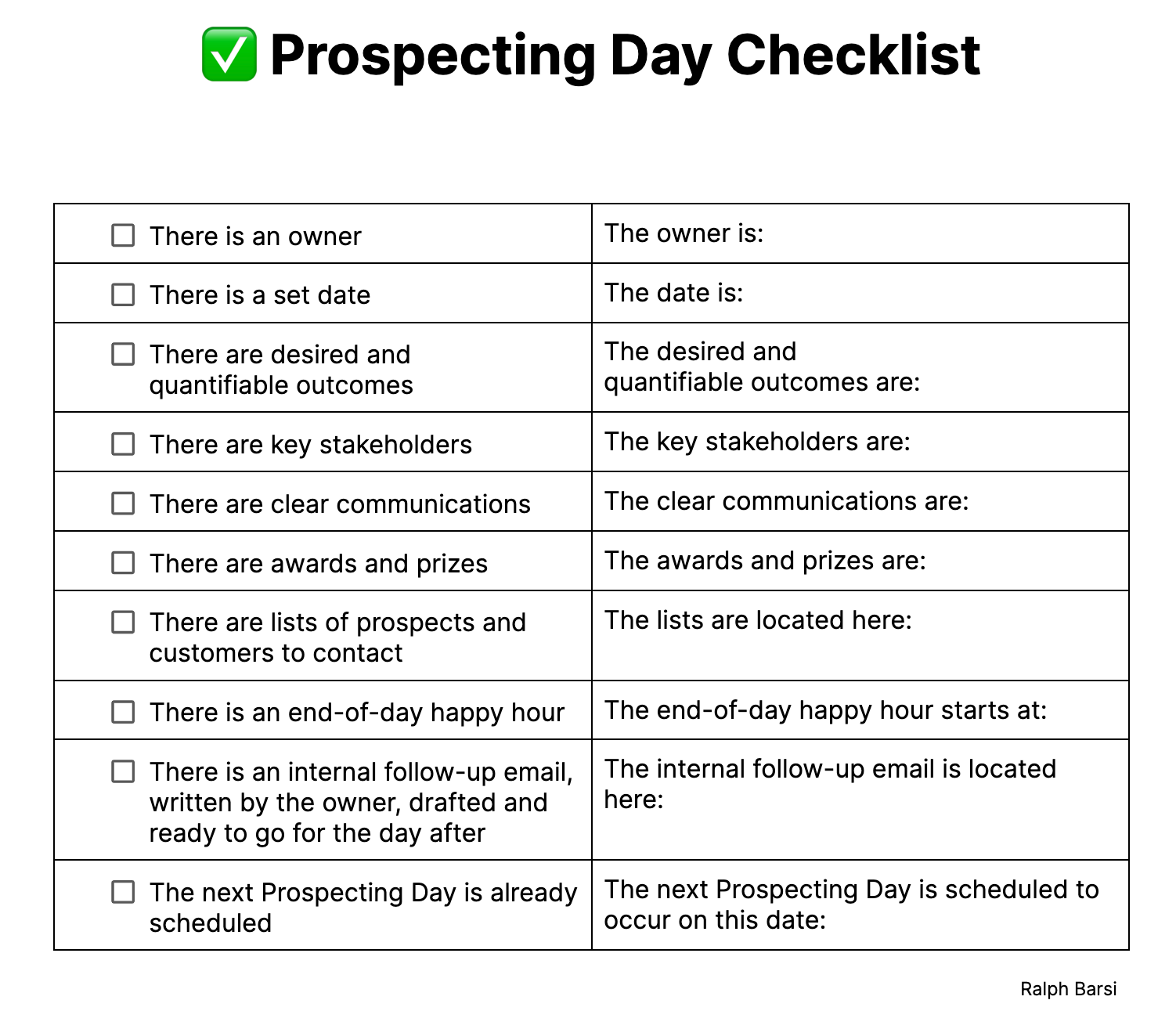
Once you've set a date, work backwards from it. For example, go with "four Wednesdays from today." A study by Gong found that Wednesday and Thursday remain the best days of the week to call prospects. If you want to rock 'n' roll on another day of the week, though, go for it.
Every system is perfectly designed to get the results it gets. - W. Edwards Deming
Start writing the follow-up email now - the one you'll send the day after Prospecting Day - and save it as a draft. Writing it will get the wheels turning on what outcomes to drive, who to involve, what awards to consider, and where the team must focus.
See it in your mind before it happens.
A Sample Internal Email for the Day After Prospecting Day
"Hi All,
What a day! Thanks to everyone for the time, enthusiasm, and involvement in yesterday's Prospecting Day. The teams engaged over 25% of our high-value target accounts, booked 78 meetings, added $2.2m to the pipeline, and actually closed a net new deal - all within the first HALF of the day!
It was truly a team effort. Over the past four weeks, as we prepared for yesterday, every stakeholder was diligent in making Prospecting Day a success. I'll call out a few outliers, so we can all recognize their great work:
• Our beloved CEO, Samantha, made certain everyone was well fed and well hydrated throughout the day. She offered DoorDash and Uber Eats for the entire team.
• Emilie and her team from Ops dialed-in each of the high-value target accounts. Every record was enriched with accurate contact information and real-time, relevant insights. Plus, the accounts were properly assigned to the field team.
• David from Marketing had killer swag produced for the AEs and SDRs. People were donning fresh hoodies and caps, sipping coffee from super cool mugs, and showing off their new decals on their laptops. So fun.
• Michelle from Sales got a hold of the decision maker in one of her key accounts. It turns out the timing was bang on, for she was able to CLOSE a net new deal by the end of the phone call!
• And Dave from our Partners & Alliances team secured three new resellers and 12 new deal registrations from our partner ecosystem. He was on fire yesterday!
Alright, let's showcase the rest of the winners. Here they are, stack ranked by # of meetings booked, # of opportunities driven, by segment, by region. Yes, for those who attended yesterday's Happy Hour, we unofficially acknowledged these winners already - but here are the official results..."
You get it. It's a sample. Now, just make that kind of announcement a reality. Socialize it among the teams and get everyone visualizing a successful event. One of the best ways to get everyone fired up is to talk about it during an All Hands call.
A Sample Slide Deck for an All Hands Call, Pre-Prospecting Day, and a Generous Breakdown
What follows are sample slides you can use to explain Prospecting Day. Slides must set the tone and hit on the why, the how, and the what of an upcoming Prospecting Day. If you're the one leading, present slides with an authentic, high energy level, to help create a groundswell of enthusiasm among the teams.
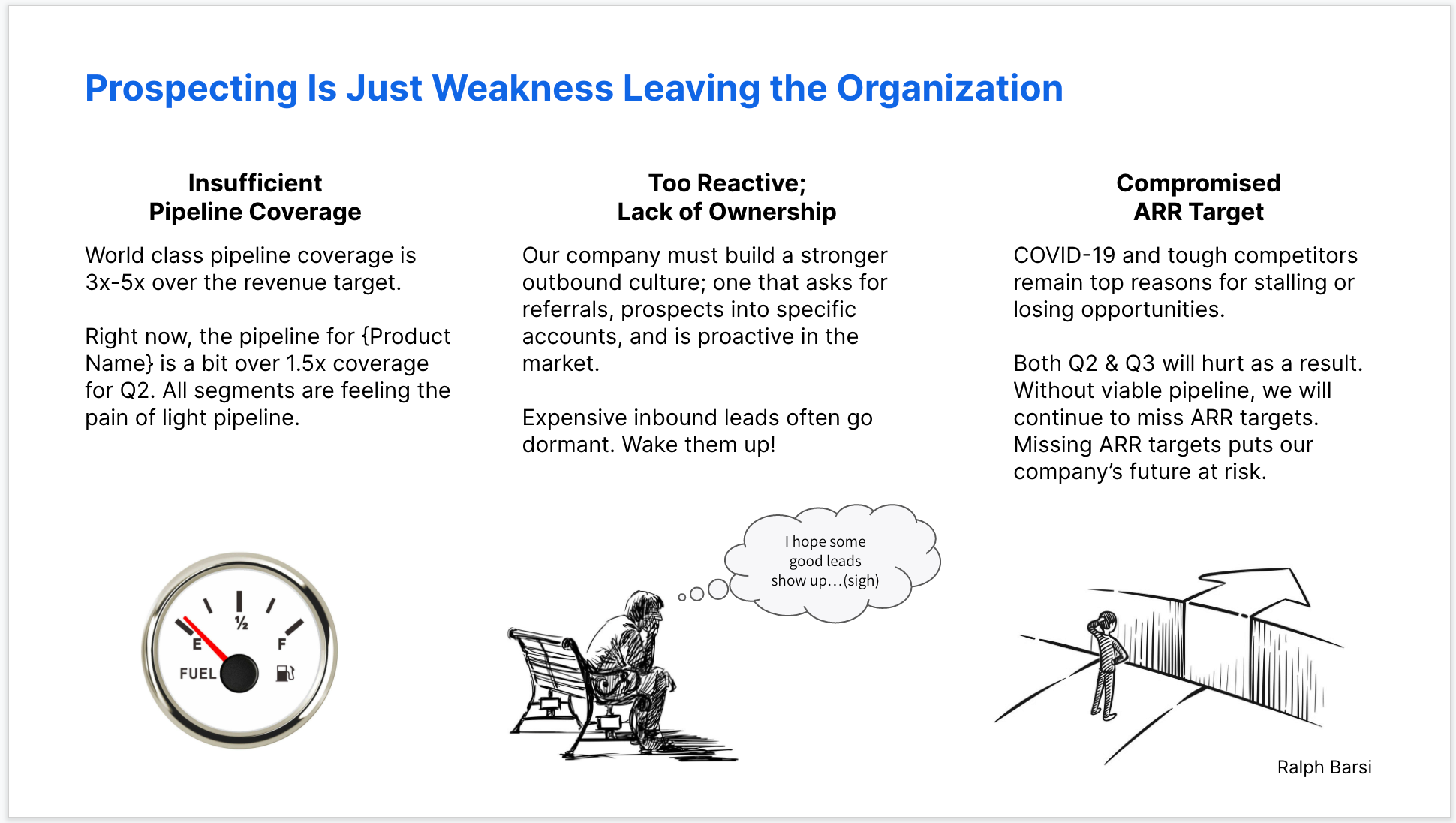
The first slide, titled, "Prospecting Is Just Weakness Leaving the Organization" is inspired by US Marine legend, Chesty Puller, who said, "Pain is weakness leaving the body."
I suggest you always start with darkness. Get the team's attention by telling them what's wrong, and that if we work together, we can be the heroes and heroines, and fix everything.
Three areas are called out here because "3" is the magic number and is easy to remember. This slide throws a left jab by mentioning the business has insufficient pipeline coverage, followed by some specifics, for context.
Another left jab is thrown, exposing the teams as "too reactive" and lacking ownership. To add color, it mentions the importance of building a strong outbound culture, as well as a unit that addresses expensive, inbound leads thoroughly and fast.
Finally, a right hook is thrown by saying annual revenue is in question. Unless things are handled - like competition or overall execution - we may miss revenue targets. Not good for anyone.
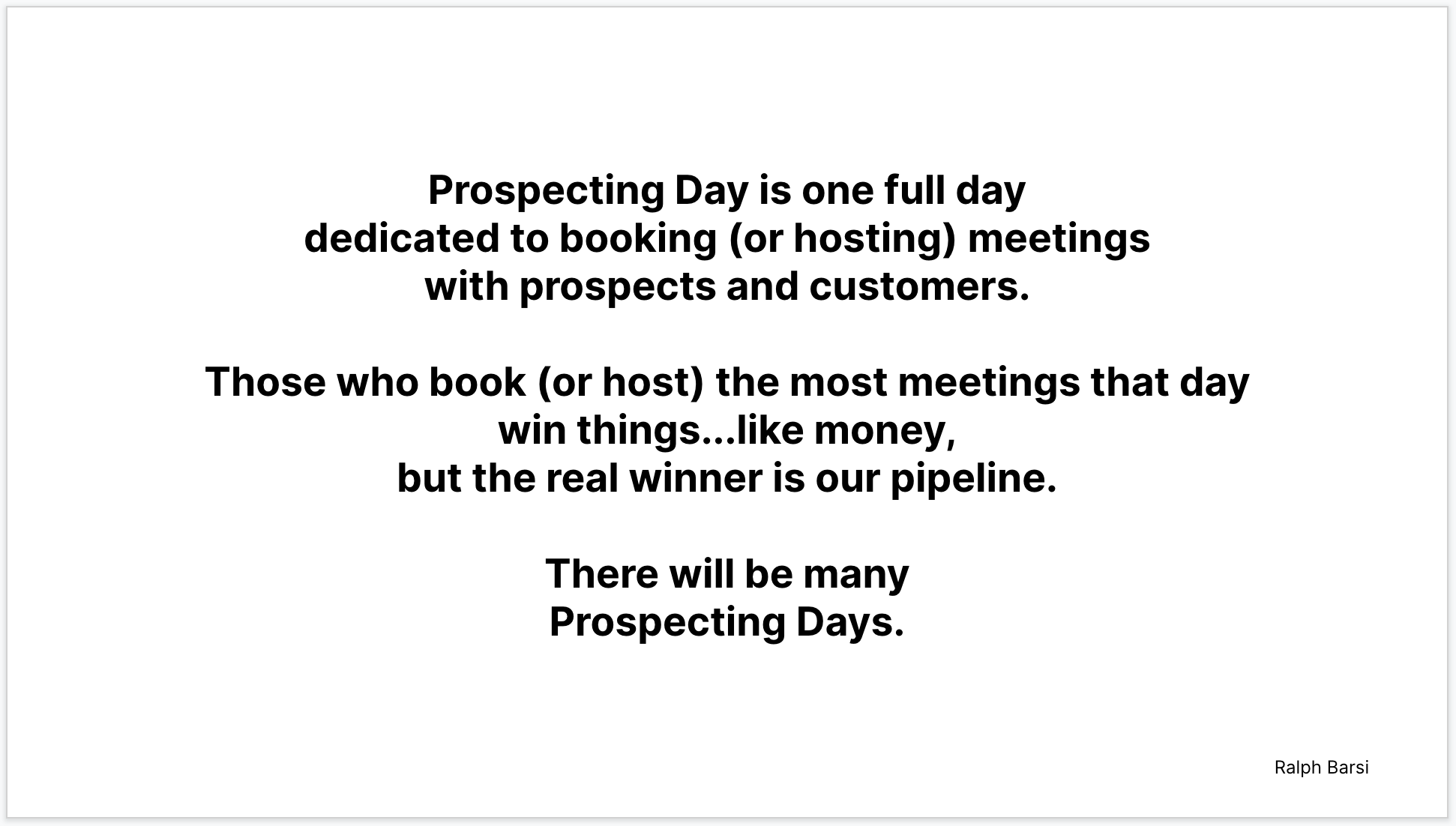
The next slide simply defines Prospecting Day. It ensures everyone from new hires to seasoned executives knows what the day is about.
Note that it can also include meetings with customers. The point is to engage the market in conversation and develop viable opportunities, whether net new, expansion, or otherwise.
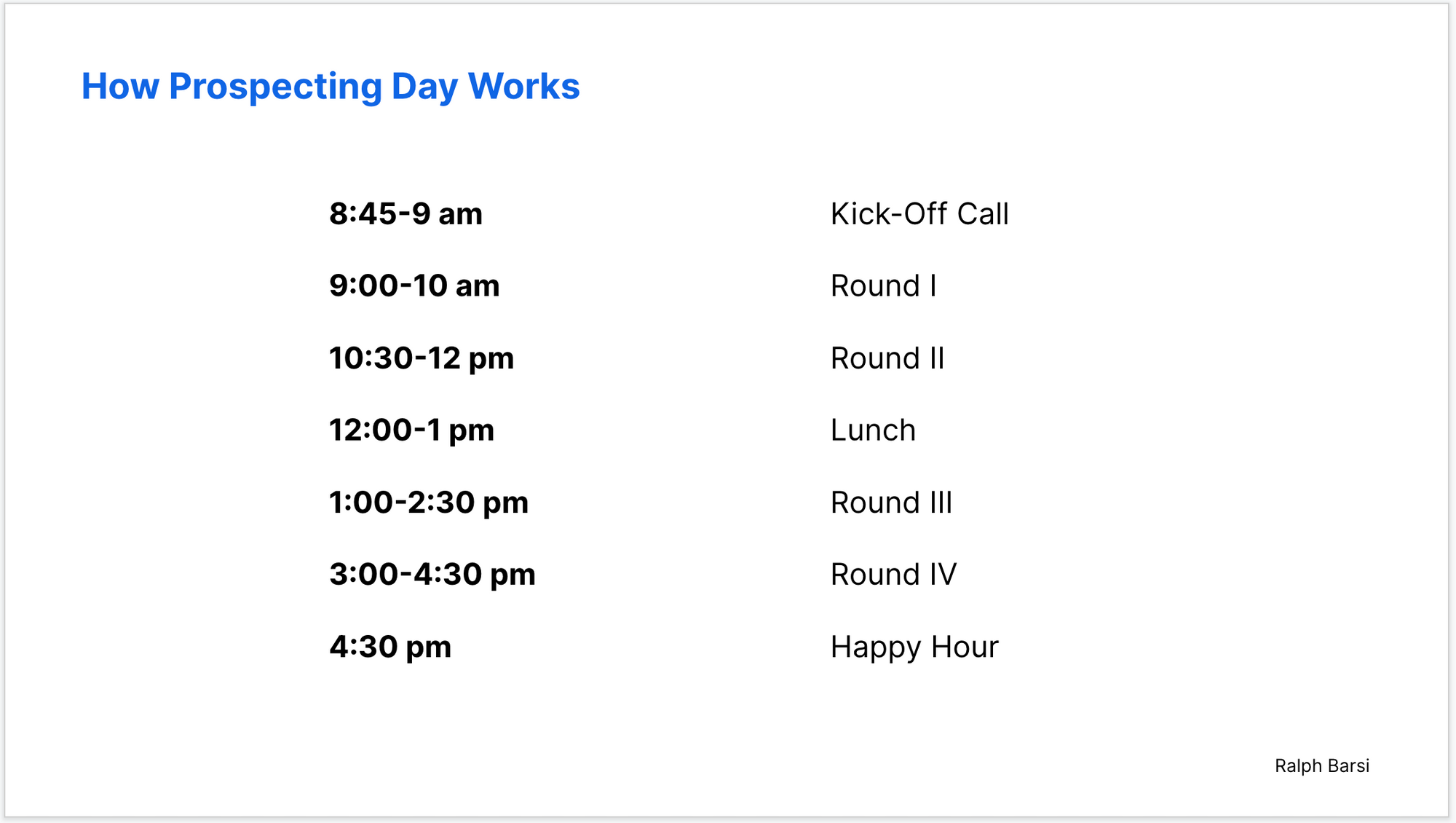
Outline the day. Break it into chunks. Kick things off with upbeat music playing and senior leaders present. I'll say that one more time: with upbeat music playing and senior leaders present. Let's go!!
Review expectations for each round (if they're different) and use an internal comms channel, like Slack or Teams, to post real-time updates and mark the beginning and end of each round. This works well if you have a competition going, say, between the inbound team and outbound team, or the west coast vs. the east coast, or sales against sales development.
And definitely remind everyone to attend the end-of-day Happy Hour. Make it mandatory to attend, at least a portion, if not all of Happy Hour. Music, beverages, preliminary results announcements, and stories from the day lift everyone's spirits.
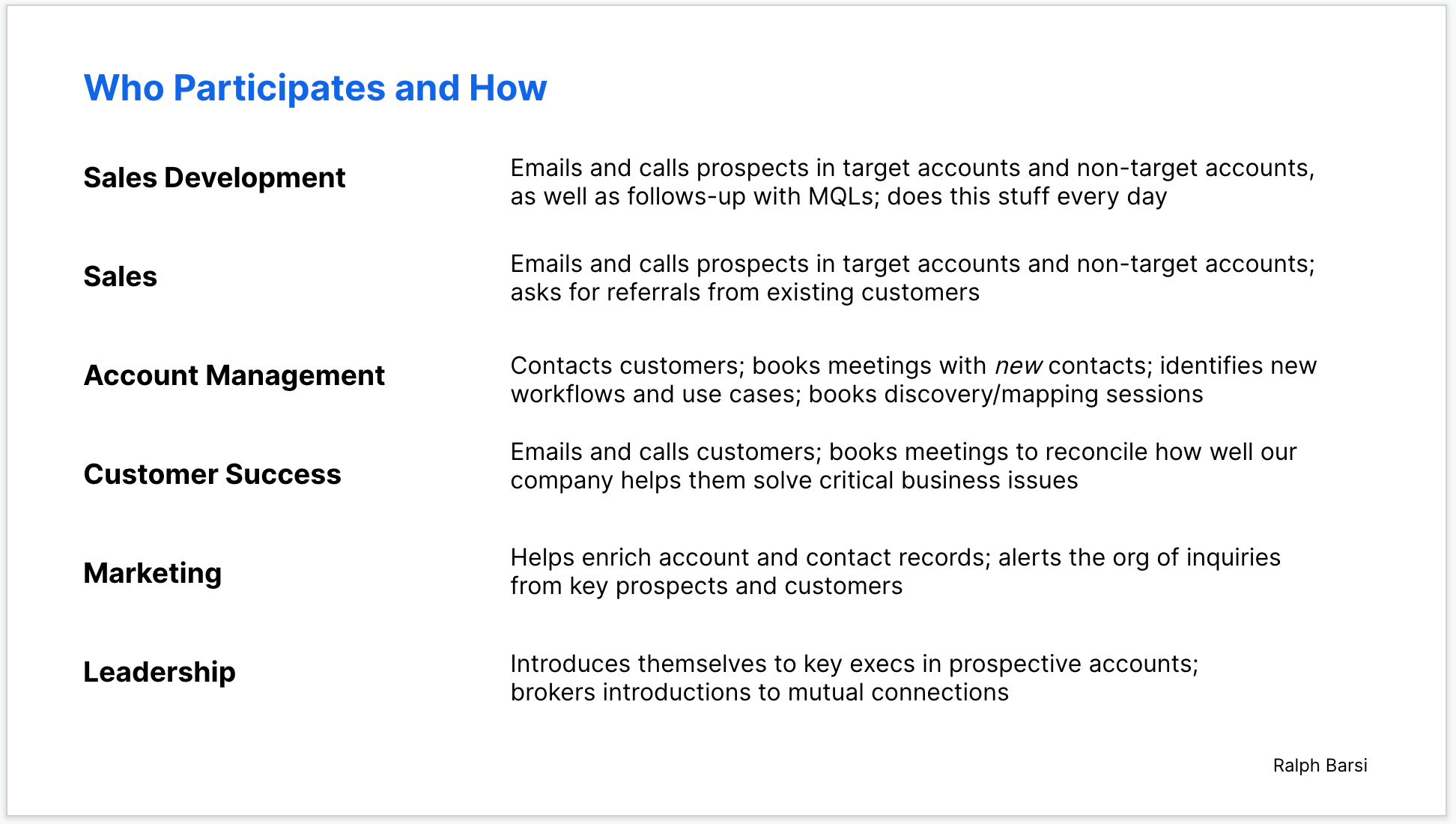
It's up to you who to involve. Much of it depends on the desired outcome (net new pipe vs. expansion pipe vs. deal registrations vs. early renewal commitments vs. introductions to high-value prospects).
Without question, though, both the sales and sales development organizations must participate.
Similar to the slide that describes what Prospecting Day is, this slide educates the business units on how they can contribute. Give each team something to DO.
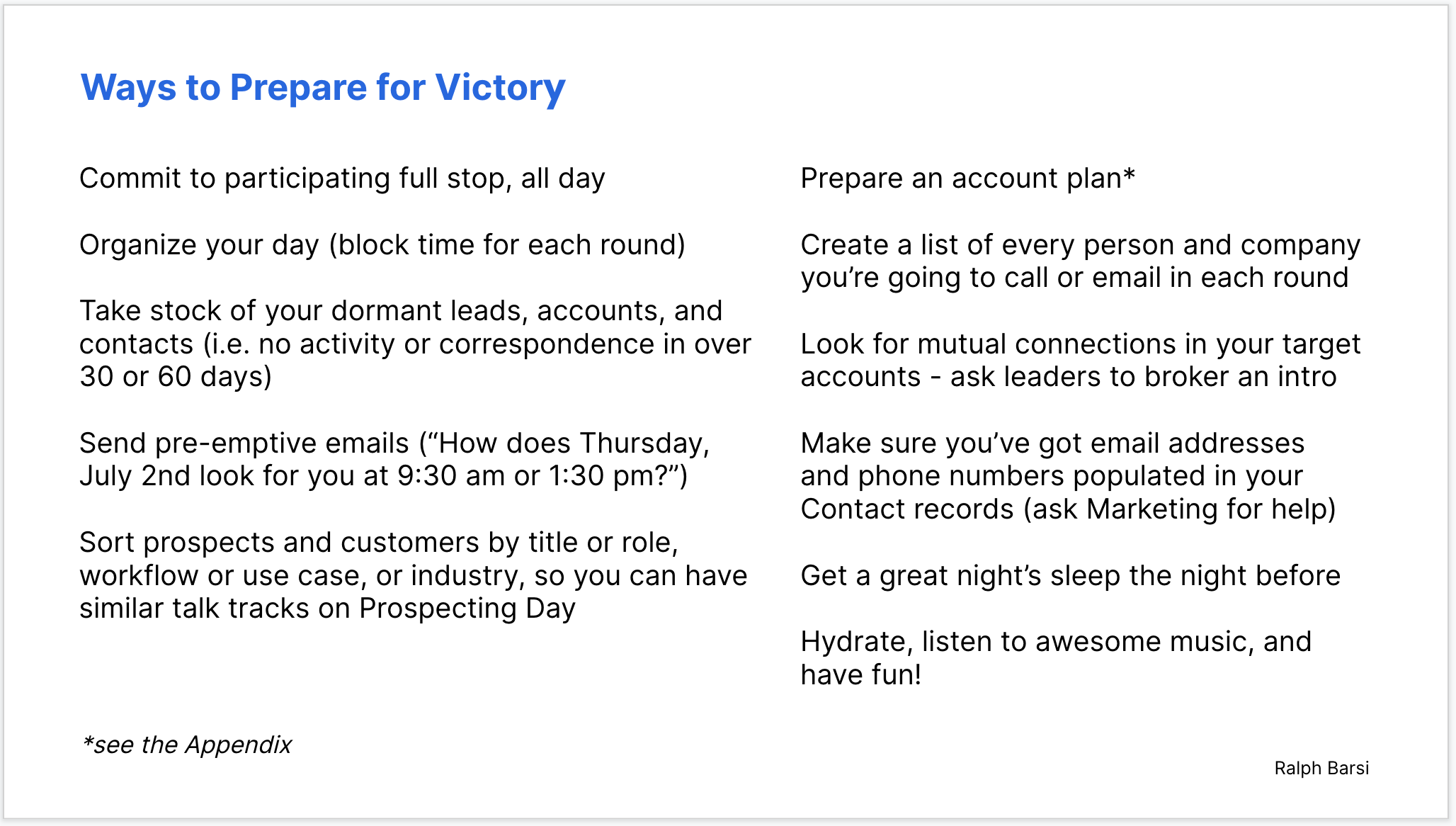
Now that each teams knows how to contribute, get specific.
• Commit to participating full stop, all day. What you put into the day is what you'll get out of it, and then some. This is the most important piece, especially if people are working away from the office. Give Prospecting Day 100%.
• Organize your day (block time for each round). Imagine owning 20 target accounts; each having 2-5 key contacts. Focus on 5 accounts (10-25 contacts) per round, calling only those people.
• Take stock of your dormant leads, accounts, and contacts (i.e. no activity or correspondence in over 30 or 60 days). Salespeople know that "No" means "Not right now." It isn't wise, however, to let those leads gather dust. Rekindle the conversation or your competitors will.
• Send pre-emptive emails ("How does Thursday, July 2 look for you, at 9:30am or 1:30pm?"). Do this anyway, for crying out loud. Let compelling emails work while you rest or work on other stuff. Plus, it gives the recipient an out (they can reply with a no), which saves you precious time.
• Sort prospects and customers by title or role or industry or location, so you can have similar talk tracks on Prospecting Day. Sorting leads and contacts by persona or vertical helps you establish conversation flow. "The six IT leaders I met with this week are all tackling the same three problems. How big or small are these problems in your company and how would you stack rank them in priority order?"
• Prepare an account plan. How good is your team at working from account plans? I'm still surprised at how many salespeople don't use them - from pre-call to post-call and everything in between, leveraging an account plan is a game-changer. Methodologies like The Challenger Sale, ValueSelling, and The New Solution Selling, offer solid templates and frameworks.
• Create a list of every person and company you're going to call or email in each round. Lists help you organize, prioritize, index, and visualize names and opportunities better than anything else. Break the list into four parts so you can make the best of each Prospecting Day round.
• Look for mutual connections in your target accounts - ask leaders to broker an introduction. Make cold calls warm calls. Invest time on LinkedIn, mining mutual connections within your accounts. If an executive you know is connected to someone you want to know, craft an email for the executive to edit and/or forward that's prefaced with their own words.
• Make sure you've got email addresses and phone numbers populated in your Contact records (ask Marketing for help). Hopefully, there's access to resources like ZoomInfo, Cognism, Lusha, Crunchbase, Sales Navigator, and others to enrich account and contact records.
• Get a great night's sleep the night before. NIH sleep expert and neuroscientist, Dr. Merrill Mitler, says, "Loss of sleep impairs your higher levels of reasoning, problem-solving and attention to detail." Hmm, those are precisely the strengths you need to succeed on Prospecting Day.
• Hydrate, listen to awesome music, and have fun! Water is liquid oxygen. The Harvard School of Health says water improves your mood and ensures your cognition is on point. Listening to music you love makes you happier - straight up. And Prospecting Day is filled with choices, so choose to have fun!
Again, those are sample slides to use in an All Hands call or team meeting. A clear, simple slide deck paints a bright picture for your stakeholders of what Prospecting Day is all about. It also helps you articulate "the why and the how" to the business.
Set things in order before there is confusion. - Confucius
During the Day
You can't win if you don't keep score. After setting targets, the first order of business is to measure actuals vs. plan. Create a dashboard or a whiteboard to monitor and track how the teams do during Prospecting Day.
Share the results after each round. Keep the entire organization - participants and non-participants - in the loop. Reward people by round, so teams are able to reset and get as much of a chance to win as they did in the morning.
You can't win if you don't keep score.
The Post-Mortem
How did the day go? What went well and what could have gone better? What wasn't covered in the preparation and planning phase? Assign an owner to the post-mortem phase, so they approach it objectively.
Gather feedback via a survey on Google Forms or SurveyMonkey. Keep it simple and model something like the post-mortem reports from Nira. Clean, neat, informative.
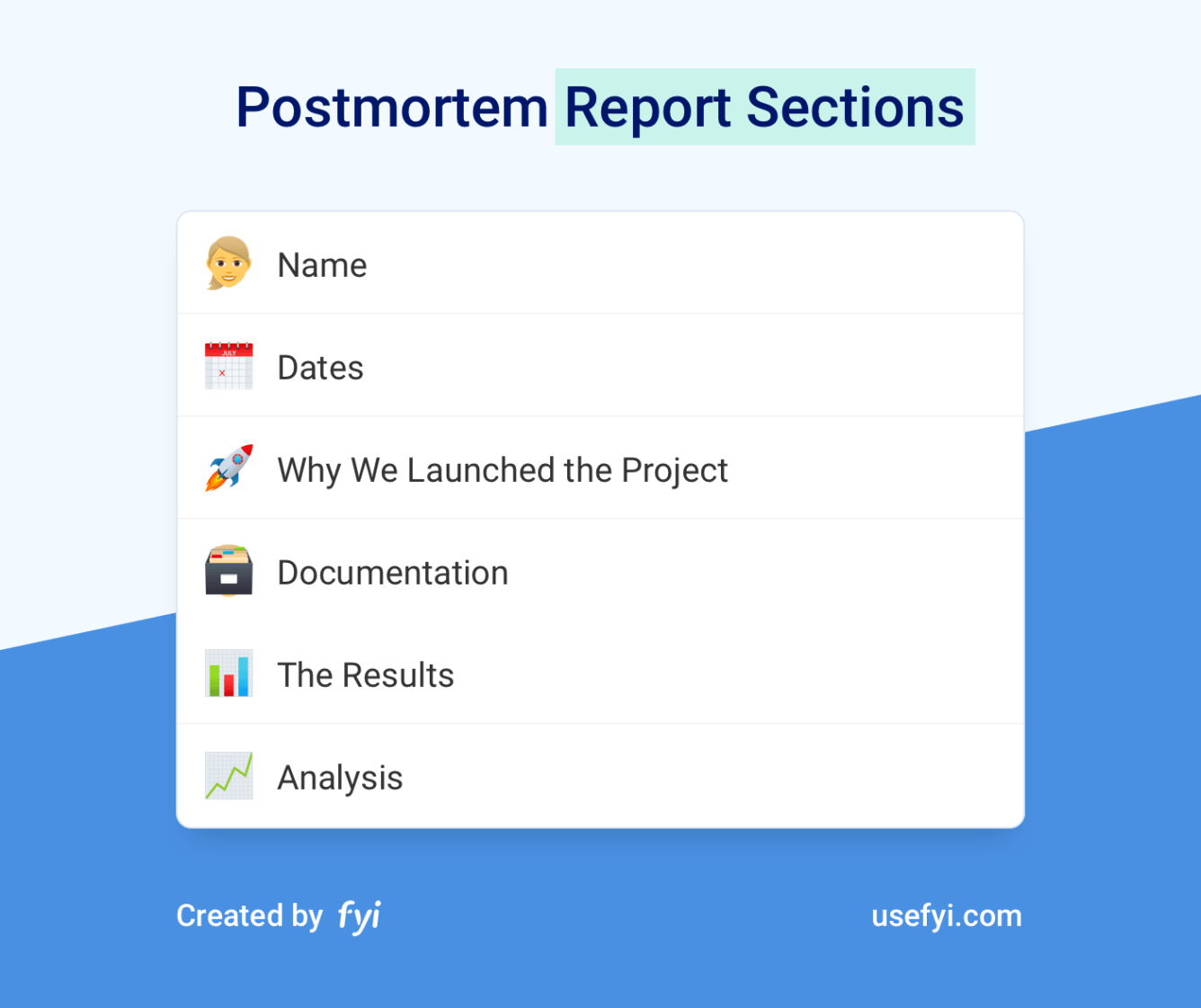
Finally, revisit the email draft you wrote for the day after, sampled earlier in this post. Fill in the real results, acknowledge the key contributors, and inform the relevant parties. You did it! Now it's time to book the next Prospecting Day(s).
Try it out and share your feedback. What did I miss? What can I expand on? What worked well during your Prospecting Day and what didn't?
Go get that pipeline!